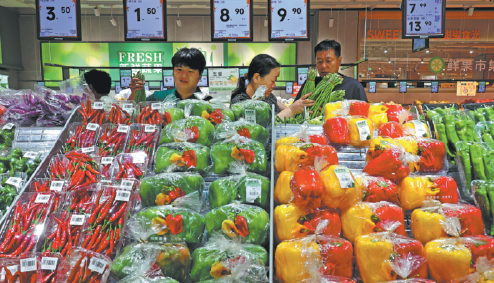Loan subsidies set to boost consumption
Experts say policy will help ease debt burdens, stimulate economic recovery

China has unveiled a policy granting interest subsidies for consumer loans for a year, in a bid to cut household borrowing costs, stimulate spending, and accelerate economic growth by aligning fiscal and monetary measures.
Vice-Minister of Finance Liao Min said on Wednesday this marks the first time the central government has subsidized individual consumer loans. From Sept 1, 2025, to Aug 31, 2026, those taking out personal consumer loans — excluding credit cards — from approved lenders and use them for actual consumption will qualify for the program.
The subsidy covers single transactions under 50,000 yuan ($6,968) and single transactions of 50,000 yuan or more in key areas such as autos, elderly care, childbirth, education and training, culture and tourism, home furnishing and renovation, electronics and healthcare. At 1 percentage point, the subsidy ratio is about one-third of current commercial bank rates for such loans.
Lou Feipeng, a researcher at Postal Savings Bank of China, said the measure will lower consumption costs and boost peoples' willingness to spend, while requiring banks to strictly verify loan use and, if necessary, channel funds through entrusted payments to control their flow.
Industry experts believe the policy will ease debt burdens, support consumption, stimulate economic recovery and help stabilize banks' net interest margins.
Lou said the subsidies will reduce interest costs through fiscal-financial coordination — unlike competitive rate-cutting — and share loan risks, protecting banks' net interest margins and asset quality while expanding business.
Dong Ximiao, chief researcher at Merchants Union Consumer Finance and deputy director of the Shanghai Institution for Finance &Development, added that the policy will directly cut borrowing costs, encourage households to use credit to improve living standards and spur effective financing demand. This, he said, will increase lending by banks and consumer finance companies while keeping rates at reasonable levels, strengthening policy coordination to boost consumption and domestic demand.
The financial sector widely agrees the key current challenge in the credit market is lackluster demand, not a lack of funds. China's central bank data show that in the first half, household loans rose by 1.17 trillion yuan, down from 1.46 trillion yuan a year earlier. Industrial Securities cited income and job pressures, plus tighter bank credit amid rising bad loans, as twin drags on consumer lending. Subsidies, by lowering borrowing costs and encouraging lending, could revive consumer lending without adding liquidity, as banks lend their own funds and apply subsidies afterward, allowing flexibility as financing costs change.
Zeng Gang, chief expert and director of the Shanghai Institution for Finance & Development, urged banks to target key spending areas like autos, appliances and tourism, design matching subsidized loan products, set clear terms, streamline applications and lower the threshold for people to obtain credit.
Major lenders, including Agricultural Bank of China, Industrial and Commercial Bank of China, China Construction Bank and Bank of China, are optimizing procedures and innovating products to implement the plan. A total of 23 authorized institutions — six large State-owned commercial banks, 12 joint-stock banks and five additional consumer loan providers — will handle the loans. Experts believe that their nationwide reach and scale will enable the policy to be rolled out quickly and deliver results in the near term.
Authorities have required lenders to improve their information systems to accurately identify payments from consumer accounts to merchants, ensuring that the subsidy funds truly support consumption.
Zeng stressed strict verification of loan purposes, post-loan monitoring, cooperation with regulators in subsidy checks, and maintaining full records for transparency.

Today's Top News
- Xi's article on developing new quality productive forces to be published
- Beijing protests new US arms sale to Taiwan
- Economic growth in 'upward momentum'
- Strong ties with Thailand stressed
- Japan warned on Taiwan interference
- Takaichi's dangerous rhetoric revives Japan's militaristic past






























